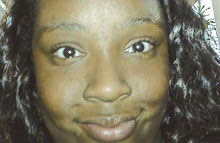New Orleans Mayor Mitch Landrieu today announced the selection of a new superintendent to head the city’s troubled police force.
Ronal Serpas will leave his post as chief of the Nashville police to take the reins from Warren Riley, a veteran New Orleans Police Department figure who has led the force since shortly after Hurricane Katrina struck the Gulf Coast in 2005.
A string of controversies—some of them stretching back to the Katrina time period—buffeted the department during Riley’s tenure, drawing the scrutiny of both the national media and the federal government.
The U.S. Department of Justice has confirmed there are at least eight ongoing civil rights investigations focused on the police force. Federal investigators are examining a series of incidents in which police officers shot civilians in the aftermath of the hurricane, and have already garnered guilty pleas from four ex-cops in connection to shootings on the Danziger Bridge that left two dead and four wounded.
Collaborating with other media organizations including the New Orleans Times-Picayune and PBS Frontline, ProPublica helped to expose several of the cases now under investigation, including the shootings of Keenon McCann, Henry Glover and Matthew McDonald.
Yesterday, Landrieu invited the Justice Department to deepen its scrutiny of the police force, asking U.S. Attorney General Eric Holder for an “independent investigation” that will improve the police department’s disciplinary systems and “introduce best practices for public safety.”
The invitation from Landrieu appears to set the stage for the Justice Department to seek thorough reforms of the police force using the 1994 Violent Crime Control Act. The law provides Justice Department attorneys with an array of legal tools—including long-term monitoring by federal judges—aimed at revamping police departments deemed to have a “pattern or practice” of violating people’s civil rights.
Since 1997, Justice Department lawyers have used the act to restructure 21 law enforcement agencies, according to a 2009 study by criminologist Sam Walker and attorney Morgan MacDonald published in the George Mason University Civil Rights Law Journal.
In those cases, Walker and MacDonald wrote, Justice Department attorneys sought to institute systems to flag problem cops, improve officer training and rewrite rules for using force.

